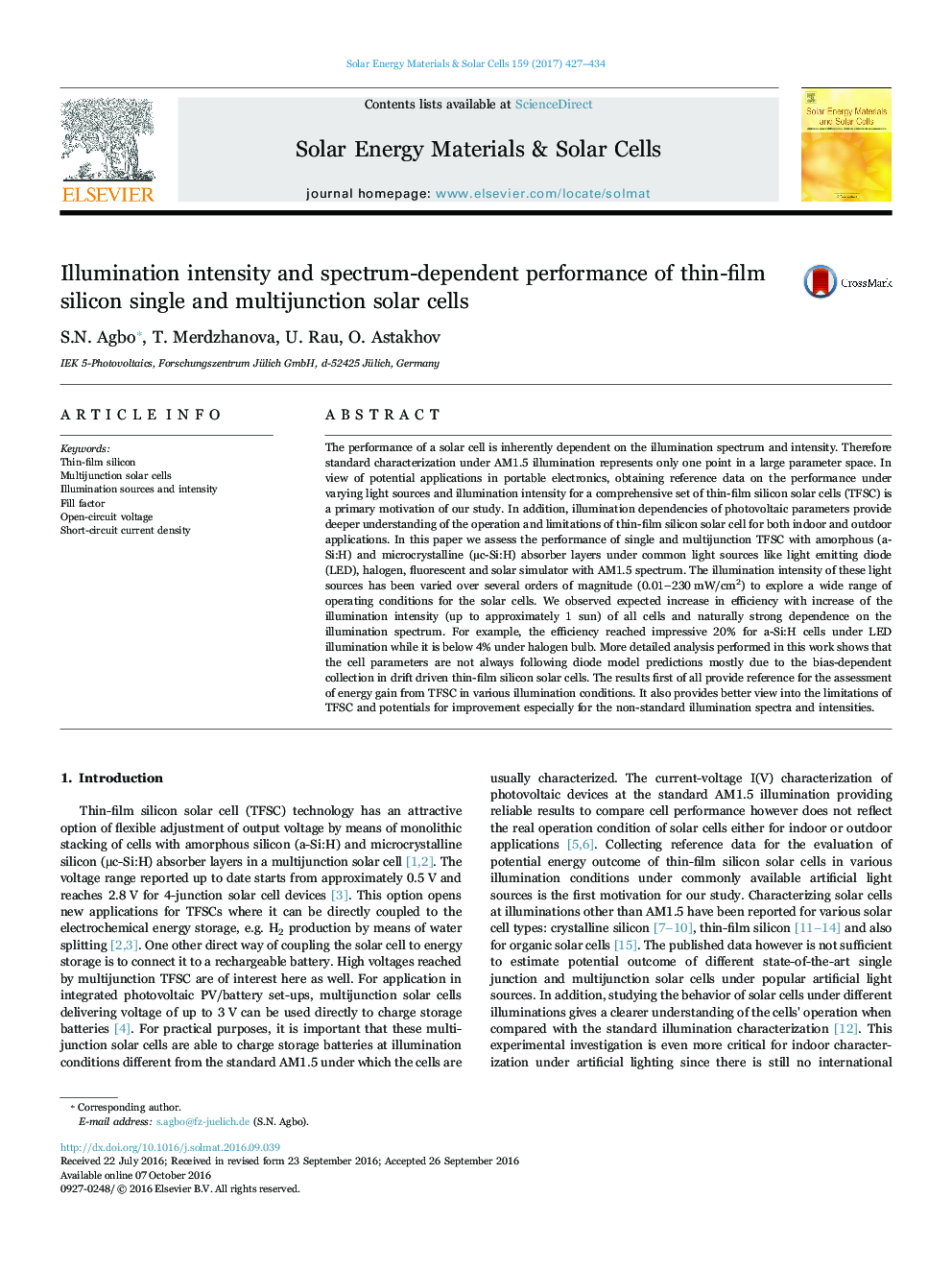| Article ID | Journal | Published Year | Pages | File Type |
|---|---|---|---|---|
| 6457543 | Solar Energy Materials and Solar Cells | 2017 | 8 Pages |
â¢Thin-film silicon solar cells' performance is assessed for different light sources.â¢PV parameters are dependent on light source and illumination intensity.â¢Thin-film amorphous silicon solar cell reaches 20% efficiency in LED illumination.â¢Experimental characteristics are correlated to basic theoretical predictions.
The performance of a solar cell is inherently dependent on the illumination spectrum and intensity. Therefore standard characterization under AM1.5 illumination represents only one point in a large parameter space. In view of potential applications in portable electronics, obtaining reference data on the performance under varying light sources and illumination intensity for a comprehensive set of thin-film silicon solar cells (TFSC) is a primary motivation of our study. In addition, illumination dependencies of photovoltaic parameters provide deeper understanding of the operation and limitations of thin-film silicon solar cell for both indoor and outdoor applications. In this paper we assess the performance of single and multijunction TFSC with amorphous (a-Si:H) and microcrystalline (µc-Si:H) absorber layers under common light sources like light emitting diode (LED), halogen, fluorescent and solar simulator with AM1.5 spectrum. The illumination intensity of these light sources has been varied over several orders of magnitude (0.01-230 mW/cm2) to explore a wide range of operating conditions for the solar cells. We observed expected increase in efficiency with increase of the illumination intensity (up to approximately 1 sun) of all cells and naturally strong dependence on the illumination spectrum. For example, the efficiency reached impressive 20% for a-Si:H cells under LED illumination while it is below 4% under halogen bulb. More detailed analysis performed in this work shows that the cell parameters are not always following diode model predictions mostly due to the bias-dependent collection in drift driven thin-film silicon solar cells. The results first of all provide reference for the assessment of energy gain from TFSC in various illumination conditions. It also provides better view into the limitations of TFSC and potentials for improvement especially for the non-standard illumination spectra and intensities.
